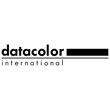
ISO/IEC 27001 Certification
Trusted by Companies Selling to Enterprise Clients Nationwide



About ISO/IEC 27001
The International Standard for ISMS
Organizations worldwide adopt this framework to protect sensitive data, manage security risks, and demonstrate commitment to safeguarding information assets. The standard provides a systematic approach to managing company information, ensuring confidentiality, integrity, and availability through people, processes, and technology.
What ISO/IEC 27001 Covers
Information Security Management System (ISMS)
ISO 27001 requires you to establish, implement, maintain, and continually improve an information security management system.
Risk Management
You'll conduct regular risk assessments and implement controls to address your highest-priority risks.
Security Controls
From access control and cryptography to incident management and business continuity.
Continuous Improvement
CERTIFICATION MADE EASY
Who Needs ISO/IEC 27001 Certification?
Certification delivers tangible business advantages for growing organizations. Companies gain competitive differentiation when pursuing contracts, particularly in regulated industries and government sectors. Many procurement processes require ISO/IEC 27001 certification as a baseline qualification, making certification essential for market access and revenue growth.

ISO/IEC 27001 Roadmap
Phase 1: Foundation & Gap Analysis
Phase 2: Control Implementation
Phase 3: Testing & Readiness
Phase 4: Certification Audit
"They gave us clear guidance, stayed ahead of regulatory changes, and became an extension of our team."
Why Chose Us for ISO/IEC 27001 Certification
Focus on Continuous Improvement
Built for Speed and Certainty
Cross-Functional Collaboration

Frequently Asked Questions
Get answers to the most common ISO/IEC 27001 certification questions.

